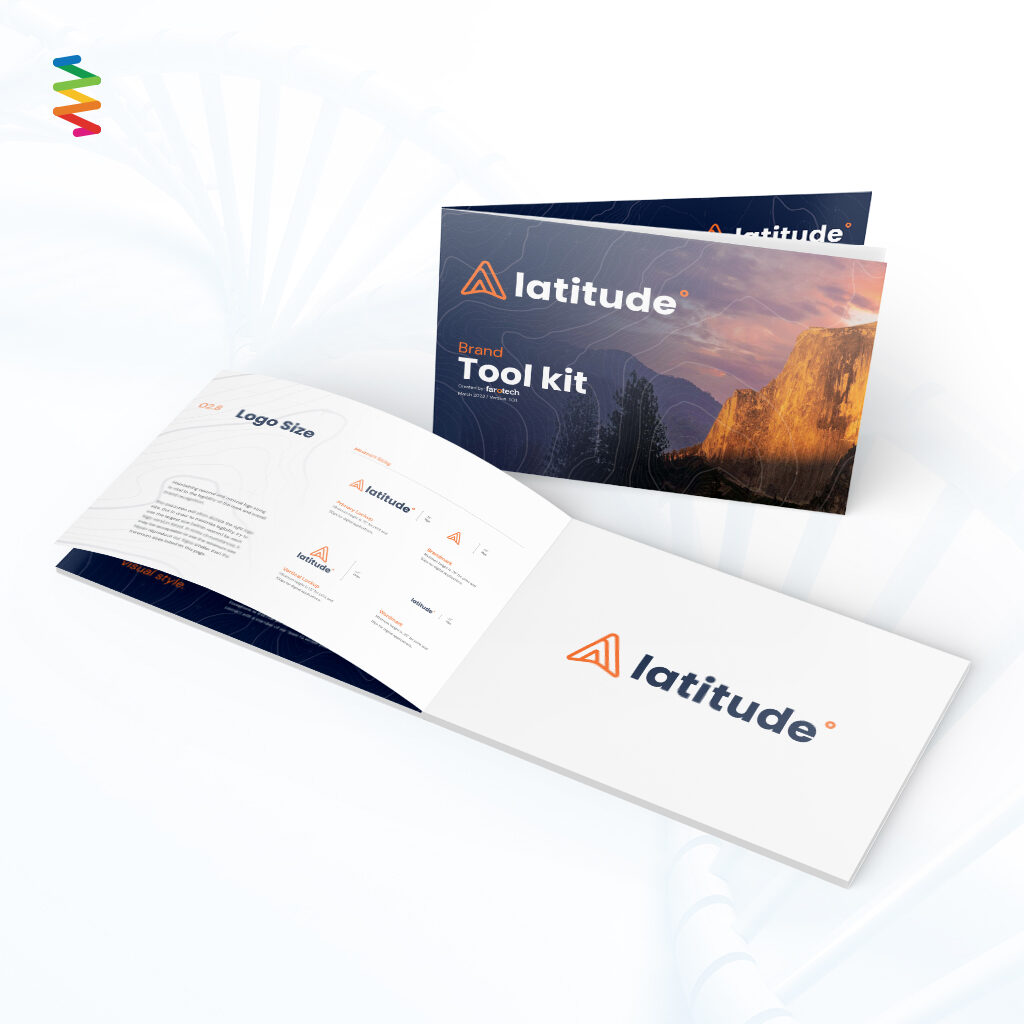The advent of AI models like ChatGPT, Claude, and Bard has opened up new and exciting doors for the everyday person: it increases efficiency at work, helps with tedious tasks, and is a brainstormer’s best friend. You can populate recipes, craft the perfect thank-you note, and write long-form content with a simple prompt.
But too often, AI and the LLMs (Large Language Models) that undergird them seem magical and all-knowing, leading many to misconstrue them as cure-alls rather than tools.
If there’s one thing marketers (and content strategists in particular) get wrong about implementing an AI-generative content strategy, it’s this conceptual trap. As the AI frenzy continues, it helps to take a sober step back and evaluate the purpose of AI, how to leverage it effectively, and why––above all else––it is critical to preserve the human element of your content strategy across all touchpoints.
Now more than ever, authenticity in content is key; and there is nothing less authentic than a robot churning out content at scale. It’s that old saying come to life: just because you can, doesn’t mean you should.
Because scale without empathy, scale without emotion, and scale without depth are recipes for content disasters. So let’s take a look at how best to approach this exciting new technology.
What is Generative AI?
Put simply, generative AI is a subset of artificial intelligence that creates new data resembling existing data, often used for tasks like image generation, text creation, and music composition.
You might be asking “How does this actually work in practical terms?”
To illustrate this, imagine you have a special toy that can mimic your drawings. First, you show the toy lots of pictures of cats. After seeing so many, the toy tries to draw its own cat. It’s using what it saw to make something new, while you help it learn from mistakes by reinforcing good drawings so it can get better. That’s basically how generative AI works in a nutshell.
For a more detailed explanation, this short PBS video on neural nets is a wonderful primer on how language models develop over time to produce AI-generated content that reads almost as if a human wrote it.
A Game Changer: 5 Key Benefits of Implementing an AI Generative Content Strategy
What’s interesting about the response to AI models like ChatGPT is that we’ve been using AI for longer than we think. Remember T9 predictive text? Or how about SmarterChild, the AIM auto-bot you could have conversations with?
Early glimmers of AI have now exploded into wide use in ways that have material impacts on businesses and people alike.
So what are the current benefits of leveraging AI tools into your content strategy?

If implemented thoughtfully, here are some of the key advantages you’ll notice:
1.Increased Efficiency
Generative AI can automatically generate content at scale, significantly reducing the time and effort required to create engaging and relevant content. By streamlining the content creation process, businesses can save valuable resources and focus on other strategic initiatives.
2.Enhanced Creativity
AI-powered content generators can provide fresh and innovative perspectives. They can generate ideas, formats, and variations that human writers might not have thought of, which can result in more creative and compelling content.
3.Scalability and Adaptability
With generative AI, content creation can easily scale to meet increased demand or expansion into new markets. AI algorithms can adapt to different languages, regions, or target demographics, ensuring consistent content generation across various audiences and markets.
4. Improved SEO
AI-generated content can be optimized for search engines, incorporating relevant keywords and topics. AI algorithms can analyze search trends and user search patterns to ensure that the generated content aligns with SEO best practices, increasing the chances of higher visibility and organic traffic for blog posts, social media posts, ads, landing pages, and more.
5. Data-Driven Insights
Generative AI tools like ChatGPT’s Code Interpreter can analyze vast amounts of data to derive valuable insights about target audience preferences, content performance, and market trends. By leveraging these insights, businesses can make informed decisions about their content strategy, identifying gaps and opportunities to better meet their target audience’s needs.
By harnessing these advantages, businesses can elevate their content strategy and stay ahead in today’s dynamic digital landscape. There’s no doubt that marketers are eager to begin using this tool, but a word of caution: all of the above benefits are rendered useless without a human eye, ear, and voice guiding the way.
Here’s just a sampling of the negative consequences of using AI irresponsibly or without oversight:
- Lack of originality and creativity
- Unnaturalness
- Plagiarism
- Misinformation
- Bias
- Hallucinations
- Lack of understanding of context
- Difficulty with complex tasks
It’s clear AI can do the heavy lifting of content generation, but you always need human beings to fact-check content for accuracy, with a frictionless process to edit, revise, and format appropriately.
A one-click publish-and-pray AI generative content strategy can not only be off-putting to readers but can violate Google’s best practices for value-based content, outlined in its E-E-A-T guidelines.
Human Oversight & Artificial Intelligence: How Google’s E-E-A-T Comes Into Play.
When ChatGPT burst onto the scene late in 2022, the number one question on the minds of marketers everywhere was: “How will this affect SEO and Google search rankings?”

While Google has not outright said that AI-generated content violates its policies, it has signaled a continuing focus on creating valuable, people-first content by adhering to something called E-E-A-T. Let’s break down what this means, and why it matters for anyone looking to leverage an AI generative content strategy effectively.
E-E-A-T stands for Experience, Expertise, Authoritativeness, and Trustworthiness. It is a set of criteria that Google uses to assess the quality of content on its search engine results pages (SERPs).
- Experience refers to the firsthand or life experience that the author has on the topic they are writing about. This is important because searchers often want to know first-hand information before they make a decision. For example, if an author is writing a review of a restaurant, they should have actually eaten there.
- Expertise refers to the knowledge and skills that the author has on the topic they are writing about. This can be demonstrated through education, training, or experience. For example, an author who is writing about medical topics should have a medical degree or certification.
- Authoritativeness refers to the reputation and credibility of the author or website. This can be demonstrated through citations, backlinks, and awards. For example, an author who is writing about financial topics should be published in a reputable financial magazine.
- Trustworthiness refers to the accuracy, honesty, and reliability of the information. This can be demonstrated through fact-checking, transparency, and accountability. For example, an author who is writing about political topics should disclose any potential conflicts of interest.
Google’s E-E-A-T guidelines are not a ranking factor per se, but they are used by Google’s search quality raters to assess the quality of content. Pages that demonstrate E-E-A-T are more likely to rank higher in the SERPs.
Here are some tips for improving the E-E-A-T of your content:
- Write about topics that you have firsthand experience with.
- Back up your claims with evidence and citations.
- Be transparent about your qualifications and expertise.
- Be honest and accurate in your reporting.
- Be accountable for your mistakes.
By following these tips, you can improve the E-E-A-T of your content and make it more likely to rank high in the SERPs.
Ensuring Quality with Human Oversight
Do you see a trend here when it comes to AI generative content strategy? Just like Google’s E-E-A-T guidelines are about placing the human at the center of the reading experience, your content strategy must account for the other end of that equation: the way you and your human writers craft content to be useful and accurate while solving the problem the user is looking to solve in a query.
By combining strong SEO best practices and keyword research with quality-driven content, you can ensure that you won’t be penalized by churning out copy that clearly looks spammy, unreadable, or stuffed with keywords.
Next, we’ll take a look at some of the latest and greatest AI-generative content tools on the market today.
Tools for the New Frontier: Generative AI Tools and How You Can Use Them
AI tools have become increasingly popular for creating content. These tools can be implemented as part of an AI generative content strategy that delivers both informative and compelling content, as well reducing the amount of time it takes to create it.
Here are some of the various types of generative AI tools and their uses in the content creation process:
Text Generation Tools
Frase is an AI-powered content creation tool that can help you research, write, and optimize your content for SEO. It uses a variety of features to help you create high-quality content.
Image Generation Models
Adobe Firefly is a family of creative generative AI models coming to Adobe products, focusing initially on image and text effect generation. It is still in beta, but it has the potential to revolutionize the way we create content. Firefly is trained on a massive dataset of images and text, and it can generate new images, text effects, and even entire creative projects. It can also be used to improve the quality of existing content.
Video Generation Tools
Synthesia is an AI-powered video creation tool that can help you create realistic and engaging videos without any video editing experience. It uses AI to generate realistic human faces and bodies that can be animated to speak your text.
Audio Generation Tools
Narrator is an AI-powered audio narration tool that can help you create high-quality audio content, such as podcasts and audiobooks. It uses AI to generate natural-sounding voices that can read your text in a variety of accents and styles.
Productivity and Efficiency Tools
Fathom.ai is a powerful note-taker you can integrate into Zoom to record, transcribe, highlight, and summarize your meetings so you can focus on the conversation.
Duet AI is a new feature from Google for Docs, Sheets, and Slides that uses AI to help you write, edit, and format your documents more easily.
Zapier is an AI-powered automation tool that can help you automate repetitive tasks. It can connect to over 2,000 apps and services, so you can automate tasks across your entire workflow.
Leveraging AI: It Helps to Have a Team Behind You
One of the questions we often get is, “Will AI replace marketers?” We like to quote something by Paul Rozer, founder and CEO of Marketing AI Institute: “AI won’t replace marketers, but marketers who use AI will replace those who don’t.”
Still, the point is to leverage it effectively and thoughtfully. AI will undoubtedly make things more efficient as it begins to dematerialize entire processes of traditional content creation.
What it won’t do is infuse it with human insight, oversight, emotion, and critical thinking.
Two things you can do to make the most of the AI revolution:
1.) Hire an agency with a team-based approach. It’s hard to keep up with the latest trends in AI. With hundreds of tools out there, CMOs and Marketing Managers are having a hard time knowing what to use. Beyond that, they don’t have the time or expertise to execute an omni-channel marketing approach effectively. Talk to us about what your goals are and we’ll tailor a plan of action to reach them with data-driven insights and powerful marketing solutions.

2.) Get your brand aligned. AI will make it even harder to stand out by drastically lowering the barriers to content creation, causing a flood of new but mediocre content. One way to make sure you’re noticed is to strengthen your brand.
Do you have a visual identity system in place? Is your messaging aligned? What are your values? Are you consistent in your brand presentation? Do you have a clearly defined purpose and selling proposition?
Do you not think all this matters? Some food for thought:
- A consistent brand presentation increases revenue by up to 33%.
- 82% of customers shop from brands that share their values.
- 90% of customers are willing to pay more if they’re purchasing from a brand they trust.
- Customers who are fully connected with a brand are 52% more valuable than those who aren’t connected.
You get the point and we have a solution.

BrandDNA is a set of workshops, exercises, and a curated visual identity system we’ll build with you to make sure your brand is always fostering emotional connections with your customers.
Contact us today for a customized marketing assessment, learn more about BrandDNA & Brand Toolkit, or the many other ways we can help you achieve your marketing goals.


